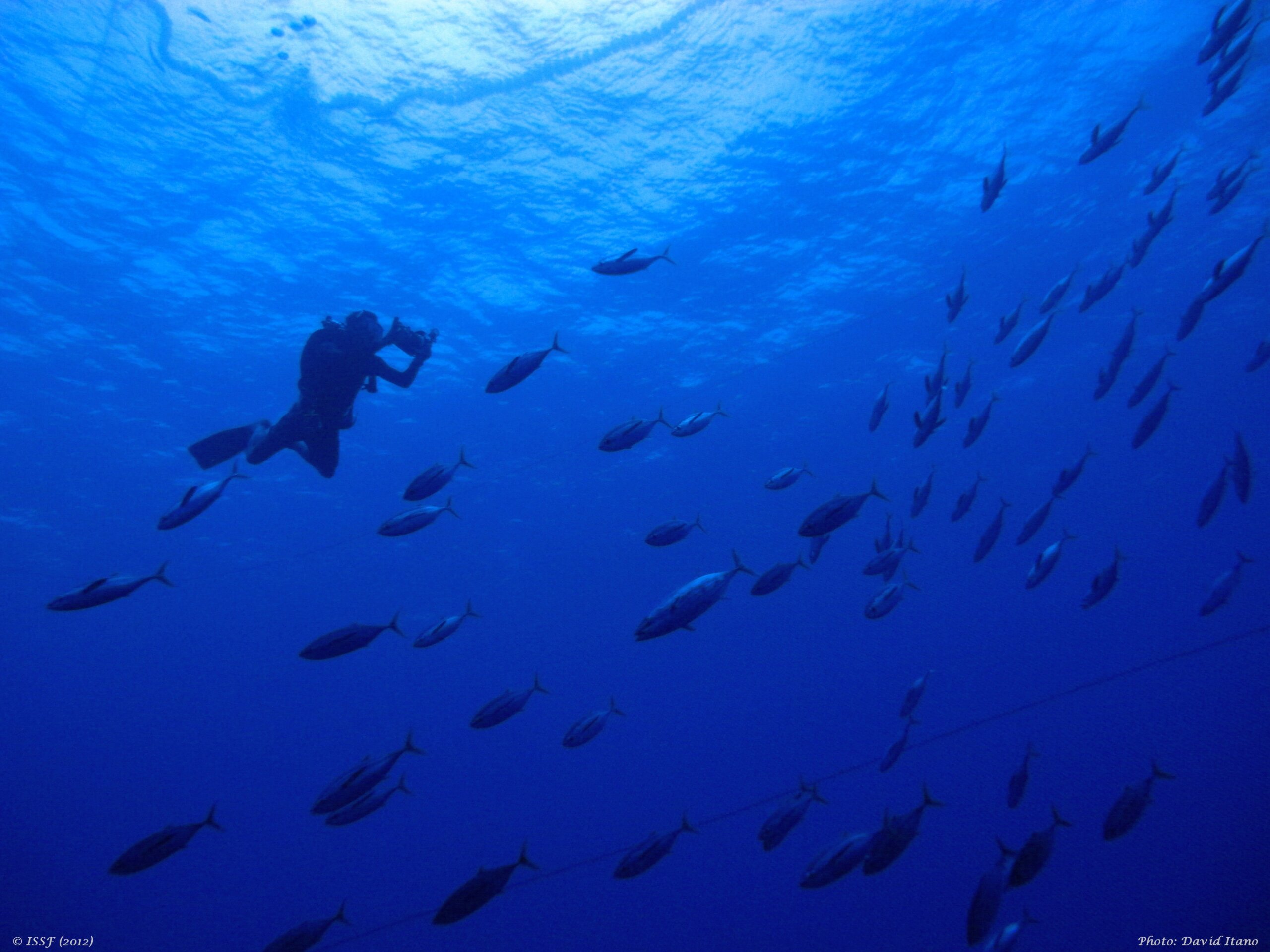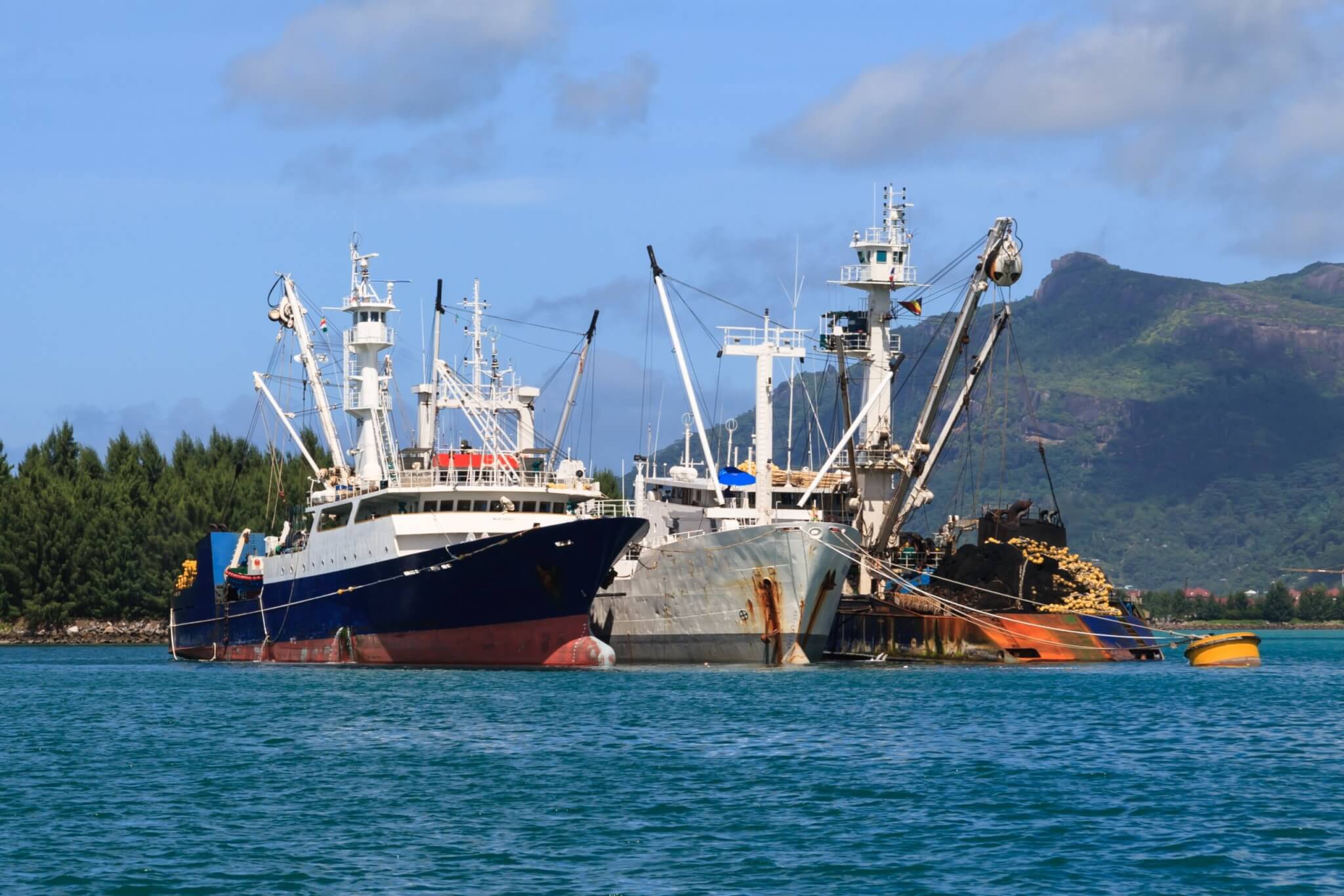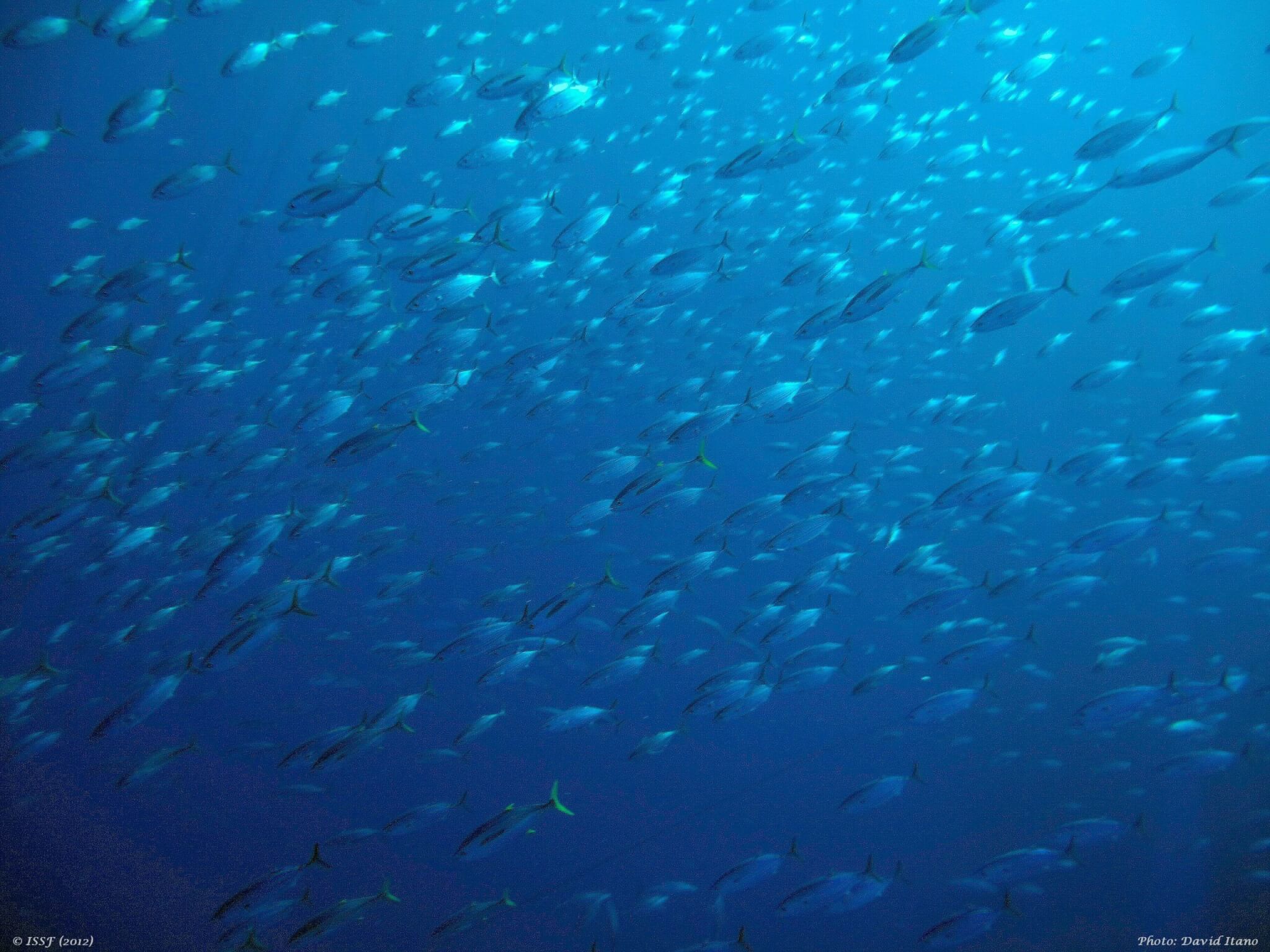Collaboration at Sea: ISSF’s Bycatch Project Cruises Again
22 September 2014
Posted by Jeff Muir
Jeff Muir is with the Hawaii Institute of Marine Biology of the University of Hawaii. He recently was part of a team of researchers during a tagging cruise in the Central Pacific Ocean.
The Secretariat of the Pacific Community (SPC) is the science provider to the WCPFC, the RFMO with the mandate for assessing and managing tuna resources in the western and central Pacific Ocean. For several years, SPC has been tagging tropical tunas in the region with both conventional and archival tags. These tagging cruises provide crucial inputs to the stock assessments done by SPC as well as information about the movement behavior of the different tuna species.
Earlier this year, a great opportunity for collaboration arose. The idea was to deploy sonic tags around FADs, in addition to the SPC’s conventional and archival ones. Sonic (acoustic) tags are quipped with depth sensors and transmit signals to a receiver so that the presence/absence of individuals can be studied over the course of days, weeks or months. With collaboration from TriMarine, which provided the location of FADs in the vicinity of the cruise, I joined the SPC cruise to deploy sonic tags on different fish species aggregated under FADs to study their behavior. The Governments of Tokelau, Cook Islands and Kiribati kindly provided us with permits to conduct this work within their exclusive economic zones.
Our crew aboard the F.V. Pacific Sunrise, a 22-meter Tongan longline vessel, was able to complete three very valuable experiments that can tell us a lot about tuna and bycatch species around drifting FADs (dFADs) commonly deployed by purse seine fishers. Acoustic tags were implanted into bigeye, yellowfin and skipjack  tunas, oceanic whitetip sharks, silky sharks, trigger fish, rainbow runners, and wahoo around 3 dFADs, which were equipped with Thalos Iris buoys. Receivers were installed on each dFAD, and are now collecting data on the each animal’s behavior around the dFAD like its depth, time around the dFAD, and absences from it. The receivers, still attached to the dFADs, are sending us data daily via satellite. When there are no more of the tagged fish around the dFADs, the study will be complete and then analysis will begin to learn more about fish behavior around FADs.
tunas, oceanic whitetip sharks, silky sharks, trigger fish, rainbow runners, and wahoo around 3 dFADs, which were equipped with Thalos Iris buoys. Receivers were installed on each dFAD, and are now collecting data on the each animal’s behavior around the dFAD like its depth, time around the dFAD, and absences from it. The receivers, still attached to the dFADs, are sending us data daily via satellite. When there are no more of the tagged fish around the dFADs, the study will be complete and then analysis will begin to learn more about fish behavior around FADs.
The prior SPC Central Pacific cruises typically focused on tagging around anchored oceanographic moorings that are on meridians 140⁰W, 155⁰W, 170⁰W and 180⁰W and between 5⁰N and 5⁰S latitudes. During this cruise, we were fortunate to have TriMarine’s help. We were given access to several of their dFADs in the area, which made for many more potential places to tag fish between moorings, which are far apart and can sometimes take several days of commuting to get to. In total, we were able to tag 239 tunas and studied their behavior over the course of 25 days.
 The latest Central Pacific cruise, aptly named CP-10, was the tenth of these types of cruises, which have used mostly Tongan and Hawaiian vessels to conduct their tagging activities. 37,000 tuna, mostly bigeye, have been tagged over the course of this ongoing SPC program. These tagging data and their subsequent recaptures have been a vital part of the stock assessment process for tropical tunas.
The latest Central Pacific cruise, aptly named CP-10, was the tenth of these types of cruises, which have used mostly Tongan and Hawaiian vessels to conduct their tagging activities. 37,000 tuna, mostly bigeye, have been tagged over the course of this ongoing SPC program. These tagging data and their subsequent recaptures have been a vital part of the stock assessment process for tropical tunas.
The industry-scientist collaboration on this cruise was great. It showed that with the assistance of the fishing industry, scientists can augment their options of when and where to tag fish. We hope to join SPC again next year for CP-11 for another round of tagging the Central Pacific!
Click here for a closer look at tuna tagging on the recent the ISSF-SPC-TriMarine cruise.
Cruise photos courtesy of Kydd Pollock.


